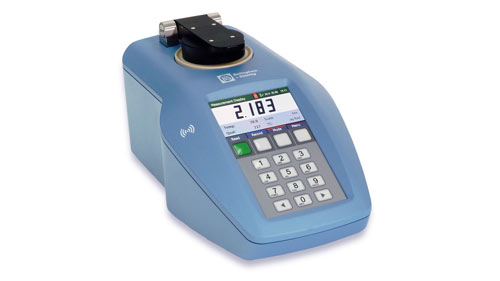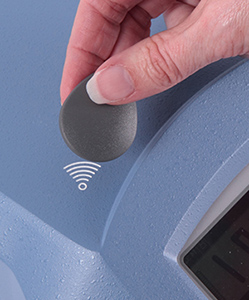18 Top Tips For Quality Refractometer Results - Part 2: Choosing the Right Refractometer
In our last blog we looked at the science behind refractometers; “What is a refractometer?” “How does a refractometer work?” and a brief look at some of the typical refractometer scales available. We also looked at how refractometers are used the world over for quality control, and also quantity control. If you haven’t read part one of our Refractometer Top Tips blog you can do so here.
So here’s what’s needed to ensure reliable results when taking refractometric measurements, whether they be Brix, RI, Urea, or many of the other application specific scales that have evolved over the 150 years refractometers have been in use.
1. Choose the right refractometer for the job
Choosing the right refractometer for your particular application can be tricky. There are many different models of refractometer to choose from and prices can range from £30 right up to £10,000. How do you know which one is correct for you?
A really useful tip is to start by writing down your measurement needs and the environment in which the reading is to be taken. This will help you determine the right instrument for the job in hand.
A simple, low cost handheld refractometer is fine for field testing before fruit harvest or for checking chemical dilution in the automotive industry. For less mess and accurate results we recommend going digital with the OPTi Digital Handheld Refractometer from Bellingham + Stanley.

If you’re mixing expensive raw materials or controlling a high speed bottling line in a beverage factory then a sophisticated instrument is required. Bench-top digital refractometers such as the RFM-Series from Bellingham + Stanley are ideal when there are needs for tighter control to avoid even the smallest amount of waste. Technologically advanced refractometers such as these are suitable for a factory environment.
2. Understand the effects of temperature on Refractive Index
Did you know that refractive index changes significantly with variations in temperature? These variations are very important to consider if you want to achieve reliable measurements.
Within food and beverage, sugar-based foodstuffs including beverages, sauces, and confectionery are specified at 20°C and have very similar temperature characteristics, so can be treated together. Organics such as oils and aromas differ widely with temperature change and so must be considered independently.
3. Talk to the experts
It might sound simple, but going to the source may answer any queries you have. Very often instrument manufacturers have a wealth of information collected over the years, and can be a great source of advice so be sure to speak with them. Once you’ve chosen your refractometer, think about pre- and after-sales advice. Choose a brand from a local supplier so that you can be supported throughout the lifespan of the product. Don’t settle for “box shifters,” the quality of your product could be at stake.
4. Think about who will be using the refractometer
There is no benefit in having the most sophisticated refractometer if you don’t stop to think about the people that are expected to use it. You wouldn’t hand over the keys to a Ferrari to someone without a driving licence! Proper consideration must be given to what the instrument is to achieve vs. the skill-set of the people expected to achieve it.
It is worth looking around for an instrument that has an intuitive display, like the RFM refractometers from Bellingham + Stanley that include a colour coded menu structure to help guide users in their daily work.
5. Clear operating procedures and proper training
 No matter what the application, good operating procedures and proper training in the use of the
No matter what the application, good operating procedures and proper training in the use of the
instrumentation is essential if you are to get the best from your refractometer. Look for a digital refractometer with operating assistance through on-screen prompts. These can help guide the operator to take precise measurements with very little training.
Password protection ensures low-level operators will not be able to access sensitive configuration menus so that instrument integrity is protected throughout the working day. Some refractometers even use RFID tags, allowing you to tap a secure tag to log in.
If available, use the instrument’s on-board audit trail that logs who has done what so that any unauthorised changes to the instrument’s configuration can be easily traced.
6. Sample preparation is the key to good measurement
 Preparing a sample prior to measurement with a refractometer is important. For handheld refractometers, this could be as simple as degassing soda from canned drinks using cups - for the uninitiated here’s a quick life hack for removing gas from carbonated drinks: Simply take two cups and pour the fizzy drink back and forth between the two containers. Soon enough you’ll have degassed the soda.
Preparing a sample prior to measurement with a refractometer is important. For handheld refractometers, this could be as simple as degassing soda from canned drinks using cups - for the uninitiated here’s a quick life hack for removing gas from carbonated drinks: Simply take two cups and pour the fizzy drink back and forth between the two containers. Soon enough you’ll have degassed the soda.
If you’re using fruit, simply crush it until it becomes a smooth juicy sample. Remember to remove any pips, seeds or fleshy pulp. For fibrous product like carrot, potato, turnip or swede, use a grater to break down the fibres and then squeeze the juice from a handful of the shreds before taking a measurement.
Next time our 18 top tips for achieving quality results from your refractometer will continue with a focus on applying sample and the effects of temperature on your readings. In the meantime, if you’d like to learn more about Bellingham + Stanley refractometers visit our refractometer overview or contact the B+S customer care team today.